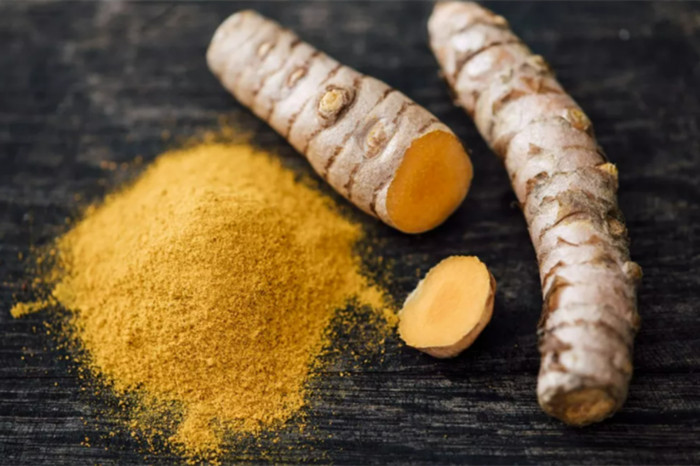Natural plant pigments refer to pigments extracted from flowers, leaves, fruits and seeds of natural plants and refined by purification. Natural plant pigments are soft in color, safe and non-toxic, and are often used in food, beverage and cosmetics to improve color. In addition, natural plant pigments have biological activity and can be used in the prevention and treatment of diseases. They are widely used in cosmetics, medical care and other fields. With the rise of modern human health awareness, the uses of this green and healthy properties of natural plant pigments are being discovered.
Types of Natural plant pigments
There are many varieties and complex chemical structures of natural plant pigments, including flavonoids, anthocyanidins, carotenoids, quinones, chlorophyll and so on.
Flavonoid
flavonoid pigment is a water-soluble pigment with ketone carbonyl structure. Most of its derivatives are yellow and have the functions of scavenging oxygen free radicals, inhibiting lipid peroxidation and delaying aging, etc., which are widely used in food and medicine. Such as curcumin extracted from turmeric tubers, with antioxidant, anti-inflammatory antibacterial, anti-tumor and other effects. Hippophae rhamnoides yellow pigment in hippophae rhamnoides peel is bright and safe, and is an important food additive.
Anthocyan
Anthocyanins can be produced by transformation of chlorophyll and mainly exist in flower petals and fruits in the form of anthocyanins. Such as morning glory, eggplant, strawberry, dragon fruit and so on. The color of anthocyanins is related to pH. Generally speaking, most red and purple fruits and vegetables contain anthocyanins. Anthocyanins are hydroxyl donors, which can effectively remove free radicals, and have anti-inflammatory, antioxidant, anti-aging, anti-tumor, cardiovascular protection and other pharmacological effects. The anthocyanins in lycium ruthenicum are the most abundant among the plants found so far. Purple sweet potato is an ideal material for anthocyanin extraction because of its high yield and rich anthocyanin.
Carotenoids
Carotenoid is a kind of terpene lipid-soluble polymer, composed of isoprene by a conjugated double bond, mainly including α -carotene, β -carotene, lutein, zeaxanthin and more than 700 components. It is A precursor substance form of vitamin A, which plays an important role in antioxidant, anti-tumor, enhancing immunity and protecting the cardiovascular system. Natural carotenoids have a wide range of uses.
Quinone pigments
Some compounds with quinone structures or the ability to biosynthesize quinones can be considered quinone pigments. If lithochroma element in comfrey kind and different lithochroma element kind, madder orange madder element in madder. Quinone pigment has good biological activity, such as anti-inflammation, anti-virus, anti-aging and anti-tumor.
Chlorophyll
Chlorophyll has porphyrin structure, mainly exists in the chloroplast of green parts of plants and algae, and plays A catalytic role in photosynthesis. It is divided into chlorophyll A and B, which has anti-inflammatory and antibacterial effects, promoting blood production and inhibiting tumor.
Plant Sources of Natural pigments
Natural pigments are extracted from the natural ingredients of plants, such as beet red, grape and pepper, and are shown in different colors such as yellow, red, green and black. It is worth noting that most of the green plants from chlorophyll, chlorophyll can not be used as additives due to its unstable characteristics, after artificial transformation can be prepared copper chlorophyllin sodium salt, is a relatively stable, commonly used green pigment.
| Colour | Pigment composition | Plant Sources |
| Red in plant | Betacyanins | Beets, red pitaya |
| Lycopene | Tomato, watermelon | |
| Sorghum red pigment, (isoflavone galactoside) | Sorghum shell | |
| Capsaicin and capsaicin | Chilies | |
| Hawthorn red pigment | Hawthorn | |
| Wolfberry red pigment | Wolfberry | |
| Yellow or orange in plant | Saffron glucoside | Saffron crocus |
| Citrus yellow | Citrus | |
| Curcumin | Turmeric | |
| Carotene | Carrot | |
| Zeaxanthin | Corn | |
| Gardenoside | Gardenia fruit | |
| Green in plant | Chlorophyll | Plant leaves |
| Black in plant | Anthocyanin | black sesame seed |
| Plum skin pigment | Black plum |
- Dandelion Extract: What It Is, Benefits, Uses and Side Effect - April 23, 2024
- Is Berberine Extract Help For Weight Loss? - April 11, 2024
- Why Is Pysllium Husk Powder A Popular Meal Replacement Ingredient? - April 3, 2024





